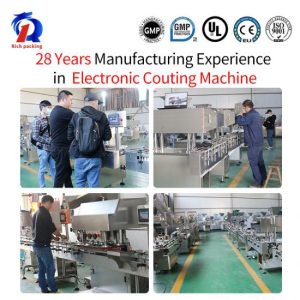Maintaining an automatic pill press machine ensures its longevity and optimal performance. Regular upkeep not only prevents unexpected breakdowns but also maximizes productivity in pharmaceutical manufacturing. Here’s a detailed guide on how to maintain these sophisticated machines confidently.
Daily Cleaning Procedures
Daily cleaning is crucial for any pill press machine automatic. Accumulated powder can interfere with the mechanical parts and affect tablet consistency. Start by removing any leftover materials from the die table and punch faces. It is recommended to use soft brushes and vacuum systems specially designed for this purpose to avoid damaging the components. Keeping the machine clean reduces the risk of cross-contamination and maintains the quality of the tablets produced.
Routine Lubrication
The moving parts of a pill press require regular lubrication to function smoothly. Depending on the machine model, lubrication schedules can range from weekly to monthly. Use only high-quality oils and greases recommended by the manufacturer, as these are formulated to withstand the pressures and speeds of the machine. Incorrect or inadequate lubrication can lead to increased wear and tear and more frequent breakdowns.
Detailed Inspection Schedules
A comprehensive inspection of the pill press machine automatic should be conducted every six months. Focus on critical components such as the punches and dies, turret, and cam tracks. Check for any signs of wear or damage, such as scratches or alignment issues. Replacing worn-out parts before they fail helps avoid unscheduled downtime and maintains the efficiency of the production line.
Calibration for Accuracy
Calibrating the pill press machine is essential to ensure that it produces tablets of consistent weight and thickness. Calibration involves checking and adjusting the weight control system and punch depth settings. This should be performed at least once a year or whenever the machine starts producing tablets that deviate from the required specifications. Accurate calibration directly influences the quality of the final product and compliance with regulatory standards.
Training for Operators
Operators of a pill press machine automatic should receive ongoing training on both the operation and maintenance of the equipment. Well-informed operators can detect early signs of issues before they escalate into serious problems. Training should include troubleshooting common issues and performing minor repairs, which can significantly reduce downtime.
Implementing a Maintenance Log
Keeping a detailed maintenance log is an effective way to track the health of your pill press machine. Record all cleaning activities, inspections, repairs, and replacements. This log will not only help in scheduling future maintenance but also provides valuable data that can be analyzed to predict when parts might fail or when performance might start to degrade.
Upgrading Software and Firmware
For digital and automated pill presses, keeping the software and firmware up to date is crucial. Manufacturers often release updates that enhance functionality, improve user interfaces, and patch security vulnerabilities. Regular updates ensure that the machine operates at peak efficiency and remains compatible with new technologies and standards in tablet production.
Maintaining an automatic pill press machine requires a proactive approach and attention to detail. By following these guidelines, manufacturers can ensure reliable operation and extended lifespan of their equipment, ultimately leading to higher productivity and reduced costs in tablet production.
